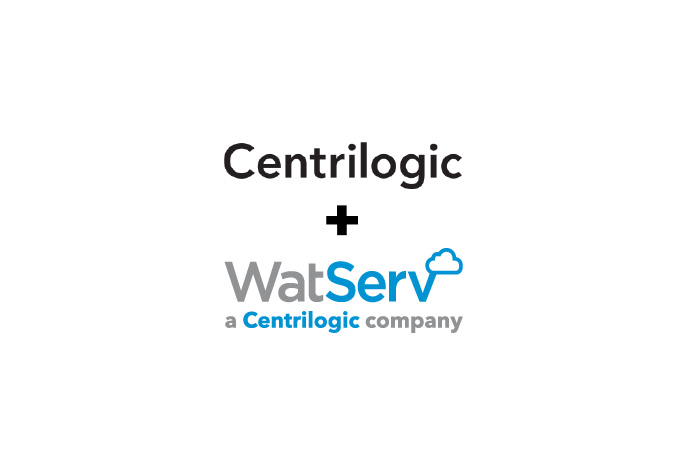A Complete Guide to Cloud Computing Security in 2021
By WatServ
September 22, 2021
As companies continue to embrace the flexibility and cost efficiencies of cloud computing, more attention is being paid to Cloud Computing Security. A 2021 report estimated that the cloud security market is expected to grow to $12.73bn (USD) by 2022.
It’s easy to see why. The world of cybersecurity is constantly evolving. As cybercriminals develop new modes of attack and circumstances change, new threats arise that need to be addressed.
In this guide, we’ll walk you through the basics of what cloud computing security is, including risks, trends, and how to create a modern cloud security strategy that will protect your business.
What is cloud computing security?
Cloud computing security refers to the policies, procedures, controls, services, and technologies used to protect data, applications, and infrastructure housed in the cloud.
Cloud computing security is a joint responsibility of both the cloud service provider and the customer. Some aspects of cloud security will always be the sole responsibility of your provider (such as ensuring the security of the infrastructure). Other aspects will be the sole responsibility of the customer, such as managing system access and user privileges. Sometimes, the responsibility will vary depending on the type of service model you have.
You should always make sure you and your team have read and understood your cloud services agreement—this document will outline the division of responsibilities for cloud security.

What are the top security risks in cloud computing?
Cybersecurity threats are a major concern for any business handling confidential or proprietary information. High-profile attacks have brought increased attention to the danger cyber criminals can pose to business operations and security. Here are some major security risks to be aware of in cloud computing.
Data Breaches
According to one recent survey, 98% of companies had experienced a cloud data breach within the last 18 months. Breaches can occur because of improper configuration, overly lax permissions and access, and human error. Data breaches can be particularly damaging if sensitive data (such as health, personal or financial data) is exposed.
Account hijacking
Cyber criminals can also gain access to sensitive data stored on the cloud by hijacking your (or your employees’) accounts. Not only can attackers gain access to sensitive information, depending on their access, they may also be able to alter or falsify data or disrupt your business services. Account hijacking can result from weak or recycled passwords or through methods such as phishing, malware, keylogging, etc.
Malware injections
Malware injections are scripts or code that are embedded into a cloud implementation, allowing attackers to manipulate and steal data and eavesdrop on your business. Common forms of malware injections include cross-site scripting attacks (e.g. adding malicious scripts to a vulnerable webpage) and SQL injection attacks.
Abuse of cloud services
The cloud is a resource that enables businesses to store large amounts of data and to share data throughout an organization. However, this strength can also be a source of threat. For example, if hackers can access your cloud servers, they can use it to host and spread malware at a large scale. Hackers can also manipulate loud servers for actions such as launching DDOS attacks.
Often, this threat is considered to be more a concern for cloud service providers. However, businesses also need to be aware of the risk that their own users may maliciously use company resources or host content on cloud servers that violate the terms of service. This is one form of insider threat (see below).
Insider threat
While not limited to cloud-based systems, insider threat is still a major concern for businesses using cloud services. It can come from current or former employees, contractors, or authorized business partners.
Insider threat can be the result of either malicious intent or due to unintentional action. In fact, the majority of insider threat incidents are due to negligence.
Of course, these are just some of the threats out there, and risks to your business will change depending on your circumstances (such as types of data, cloud services used, and industry).
Cloud computing security trends in 2021
As noted, each company will need to understand its own security threats. But it’s also important to understand emerging trends within the cloud security environment in order to identify where new attacks may come from.
Insecure APIs
APIs (or application programming interfaces) are software intermediaries that allow a piece of software or service to interact with another application or service. Ideally, APIs allow you to customize your cloud services and interact with 3rd party vendors.
However, because APIs have become the norm for many cloud developers, they have become a target for cyber criminals. A recent survey found companies manage on average 363 different APIs, including many public facing APIs.
Finding and targeting insecure APIs is a high-value target for hackers, hence why this is a growing area of concern for cloud computing security. Examples of insecure APIs include:
- Creating APIs without authentication (or with weak authentication) that leave a window open for hackers to enter through
- Relying on open source software which can create vulnerabilities to supply chain attacks
Insider threats
While we already covered insider threats in the section above, it’s important to note that this is a growing risk. Reports suggest that insider threats have increased by 47% over the past two years, and 6 in 10 data breaches were due to inside sources.
Most commonly, insider threats are a result of negligence rather than malicious intent, although fraud, IP theft, and attempting to make monetary gains from insider information are common factors in malicious insider attacks.
One reason companies need to be vigilant about insider threats is that they can be difficult to detect—and expensive to resolve. Taking preventative measures (such as user access management or employee education) will cost less in the long-term than a damaging security breach.
Zero-day attacks
A zero-day vulnerability is a vulnerability that exists in your cloud services or software but is not yet known to you (or your cloud service provider). A zero-day attack is an attack by cybercriminals using that vulnerability—meaning you have “zero days” to fix it.
In the case of a zero-day attack, a software or service is launched. Developers are unaware that a vulnerability exists—and so aren’t working to fix it. Before developers identify or implement a solution to the vulnerability, attackers identify and exploit the vulnerability in order to steal data or abuse your server’s resources.
The most insidious aspect of zero-day attacks is that they can often take a long time to detect—organizations may not be aware of their vulnerabilities until many months after an attack has taken place.
In Q1 of 2021, 74% of all attacks (including non-cloud attacks) were zero day attacks. This makes these forms of attack a growing area of concern.
How to create a modern cloud security strategy
As we’ve stated previously, adopting a cloud solution for your business is not itself a security measure.
While cloud solutions can offer enhanced security protections, you still need to have a comprehensive, modern cloud security strategy.
There are three key aspects to consider when implementing a cloud security strategy.
1. Ensure your security strategy remains up-to-date
Adopting a cloud solution (and using it to adapt to new ways of working) means a necessary adjustment to your architecture, technology, and security. You cannot simply transplant your legacy security system and tools over to a new cloud environment.
As part of your strategy, it is critical that you embed a culture of security throughout your organization, and ensure that your security team is an integral part of adopting a new cloud solution.
As solutions or ways of working shift, periodic reviews of your security strategy should also be undertaken.
2. Develop the right level of security friction
An unavoidable side-effect of security measures is a level of security friction. For example, everyone has had the tedious experience of being locked out of a critical piece of software due to a forgotten password.
However, applying more and more layers of security to the system may eventually make it impossible for even authorized users to perform the tasks which they need to do. As you build your security strategy, you need to be mindful of ways to reduce unnecessary friction while still maintaining high levels of security.
3. Determine which security responsibilities are standalone vs integrated
Some security measures need to operate as dedicated and standalone. Other measures will need to be tightly integrated into business departments.
As you develop your cloud security strategy, you need to identify where security measure responsibilities will lie, and how various teams/layers of your security operations will interact with one another. This requires deep knowledge of how the business operates, and also a willingness to be flexible as business operations adapt and change.
Why you should choose a security-first cloud solutions provider
It’s important to choose a cloud solutions provider who takes security as seriously as you do. Remember:
- The public cloud introduces additional security considerations
- You have a shared responsibility for security alongside your cloud solutions provider
- Cloud security compliance is always changing to adapt to new realities and regulations
- Risk mitigation is possible
Cloud computing security measures need to be a way of life. With a security first cloud solutions provider, you can expect a partner who:
- Understands and tackles both current and emerging threats
- Provides 360 insights into how to mitigate risk (allowing you to stay focused on leveraging the power of the cloud to drive growth)
- Supports you to meet your security obligations by engineering and maintaining an environment that minimizes risk, and provides continuous threat monitoring, detection, and mitigation
- Adapts to address new challenges and to ensure all necessary compliance
- Adopts the most up-to-date and effective mitigation strategies available
You already know that security breaches can create financial loss, reputational damage, and require expensive remediation efforts. Protecting your cloud services, therefore, is crucial to protecting your business and your customers.
But you don’t have to be alone in the effort to secure your cloud environment. You can choose a security-first partner who will go above and beyond to protect your business.
Need help to protect your Cloud?
WatServ’s experienced team is dedicated to providing best in class cloud security services so that your business can enjoy the benefits of the cloud—and have peace of mind that your cloud security is in expert hands.
Learn more about how WatServ can help by visiting the CloudSecure services page.
About
WatServ is an IT solutions provider that helps organizations digitally transform through cloud technologies and managed services.
Serving clients as a trusted advisor since 2006, WatServ provides experience-tested, strategic solutions across all stages of the digital transformation journey. Clients choose WatServ to migrate infrastructure and applications to the cloud, secure critical data, implement disaster recovery, deploy virtual desktop, enable data-readiness for productivity solutions and manage IT environments.
Our clients span a broad range of industries, and we’re a global supplier of IT services for many Brookfield Portfolio Companies. To help our mid-size clients, we provide scalable offerings that simplify cloud adoption and drive business optimization. For enterprise clients, we co-create cloud solutions that enable stability and efficiency for complex IT tools and processes.
With more than 15 years of experience, WatServ has a track record of delivering quantifiable business results and a superior client experience. Ranked as one of Canada’s Top 100 Solution Providers for the last three years in a row, WatServ is always on.

